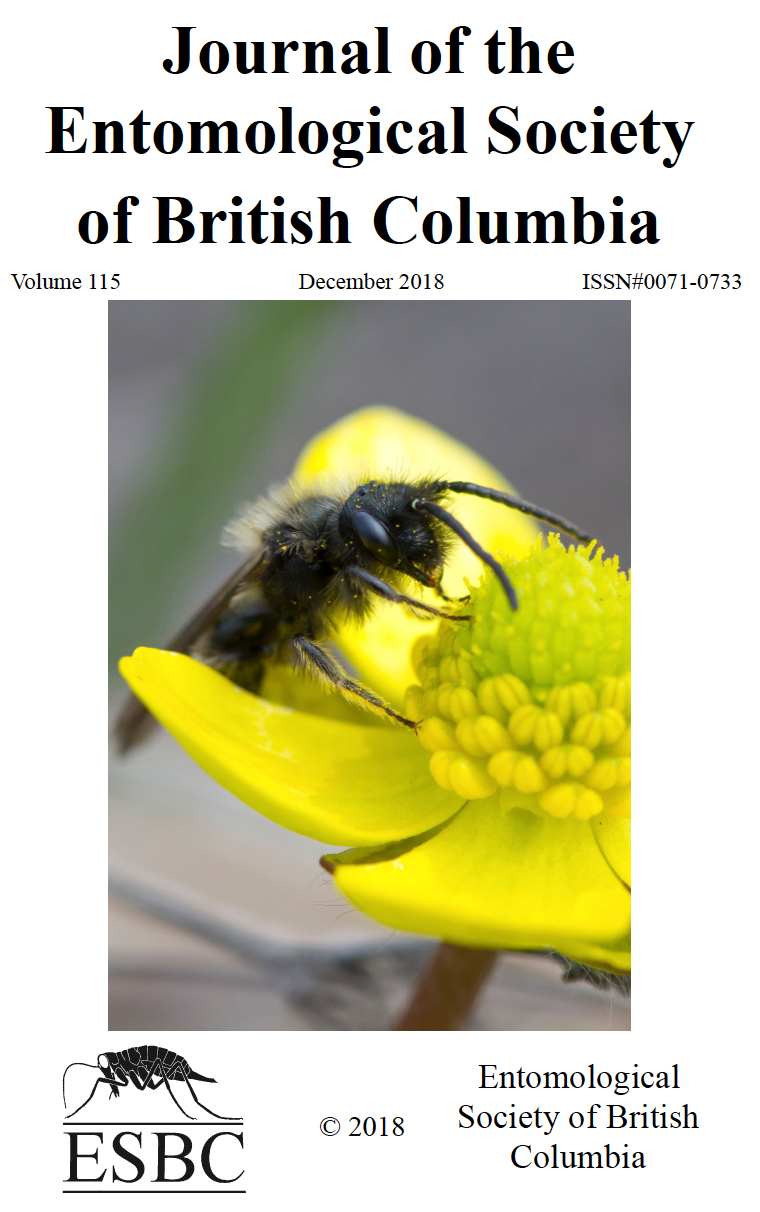First records of Baetis vernus Curtis (Ephemeroptera: Baetidae) in North America, with morphological notes
Abstract
The Baetis vernus group (Ephemeroptera: Baetidae) – which includes B. brunneicolor McDunnough, B. bundyae Lehmkuhl, B. hudsonicus Ide, B. jaervii Savolainen, B. liebenauae Keffermüller, B. macani Kimmins, B. subalpinus Bengtsson, B. tracheatus Keffermüller & Machel, and B. vernus Curtis – is both diverse and taxonomically tangled. Some members of the group – B. brunneicolor, B. bundyae, and B. hudsonicus – have been previously found in North America. The remainder of the group is known to be only of Palearctic distribution, including B. vernus, which has a wide trans-Palearctic distribution. We report the collection of specimens from the Northwest Territories and British Columbia that we have identified as B. vernus using DNA barcoding and morphological examination and provide characters to assist separation of the North American members of the group from B. vernus. A genetically cohesive Holarctic clade for B. vernus likely relates to a Beringian dispersal event. This substantial expansion of the known range of B. vernus adds new phylogeographic and ecological complexity, but it may also help to provide further clues to the evolutionary history of this group.Downloads
Published
Issue
Section
License
Authors who publish with the Journal of the Entomological Society of British Columbia agree to the following terms:
-Authors retain copyright and grant the journal right of first publication with the work simultaneously licensed under a Creative Commons Attribution License that allows others to share the work with an acknowledgement of the work's authorship and initial publication in this journal.
-Authors are able to enter into separate, additional contractual arrangements for the non-exclusive distribution of the journal's published version of the work (e.g., post it to an institutional repository or publish it in a book), with an acknowledgement of its initial publication in this journal.
-Authors are permitted and encouraged to post their work online (e.g., in institutional repositories or on their website) prior to and during the submission process, as it can lead to productive exchanges, as well as earlier and greater citation of published work (See The Effect of Open Access).


